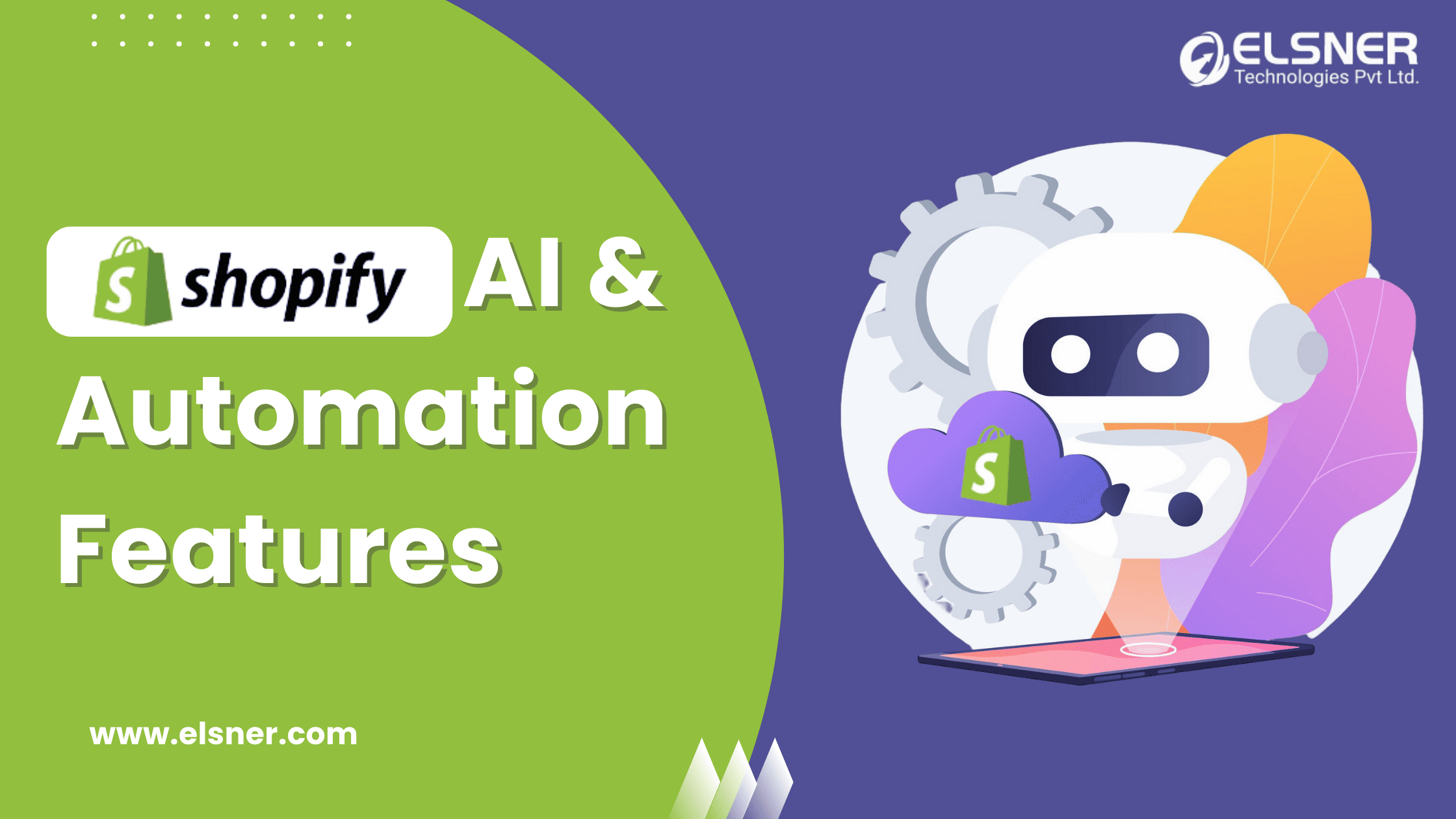- What is a shipping app?
- What are the common features of a Shipping App?
- 1. Scheduling and tracking:
- 2. Inventory management:
- 3. Order processing:
- 4. Package tracking:
- 5. Notifications:
- 6. Multiple carriers:
- 7. Customizable shipping process:
- 8. International shipping:
- 9. Integrating other tools:
- What is Checkout performance?
- How can you improve checkout performance?
- What are the benefits of great checkout performance?
- Improved customer experience:
- Cost savings:
- Increased efficiency:
- Competitive advantage:
- Enhanced features:
- Reduced errors:
- Increased sales:
- Experts Thoughts:
- Shopify Expert 1: Jessica Shee – iBoysoft
- Shopify Expert 2: Ada Scott – EaseUS Software
- Shopify Expert 3: Jonathan Merry – Bankless Times
- Shopify Expert 4: Edlyn Collanto – UpCity
There are over millions of online stores that Shopify empowers with its great resources. We understand that there is no single strategy to boost the performance of your shipping app and generate better conversions.
A customer is willing to buy a product and adds it to the cart but does not initiate the process further. What might be the challenge? As a business owner, you are responsible for thinking from the customer preference and dealing with the store functionalities accordingly.
Even a single element on the checkout page greatly impacts the customers. How can you enhance the performance of your checkout process?
What is a shipping app?
This software handles and monitors the shipping process for ecommerce businesses. This helps the owner easily sync the products’ shipment for multiple locations. Normally, these applications schedule and monitor deliveries, inventory management, and process orders successfully.
Many shipping applications also track the status in real-time and receive notifications. Also, with the help of great platforms like the Shopify Shipping App, users can access it from mobile and desktop at their convenience.
What are the common features of a Shipping App?
There might be multiple features of the shipping app, but some of them should be there for a better customer experience:
1. Scheduling and tracking:
Users can utilize the app to schedule packages’ pickup and delivery and monitoring shipments’ progress.
2. Inventory management:
The app helps to keep track of your inventory and receive notifications when it is running low or when it needs to be restocked.
3. Order processing:
The app can process orders, create shipping labels, and view and manage your order history for easier management.
4. Package tracking:
Some shipping apps allow you to track the location of your packages in real time, so you can see where they are and when they are expected to arrive.
5. Notifications:
Many shipping apps allow you to receive notifications about the status of your shipments, such as when they are shipped, delivered, or delayed.
6. Multiple carriers:
Some shipping apps allow you to choose from multiple carriers, such as FedEx, UPS, and USPS, to find the best shipping option for your needs.
7. Customizable shipping process:
You may be able to customize your shipping options, such as selecting a specific delivery date or choosing a delivery option that requires a signature upon receipt.
8. International shipping:
Some shipping apps allow you to ship packages internationally, with customs clearance and delivery tracking options.
9. Integrating other tools:
Many shipping apps can be integrated with other tools, such as eCommerce platforms, accounting software, and CRM systems, to streamline your shipping process and improve efficiency.
What is Checkout performance?
This is the percentage of the customers that visit your platform and complete the order. Most businesses have a lower CER (Checkout Engagement Rate), where the customers start the checkout process.
Checkout performance for e-commerce refers to the speed and efficiency with which customers can complete their purchases on an online shopping website. It is significant to have a smooth and efficient checkout process is important because it helps to reduce shopping cart abandonment, which is when customers add items to their shopping cart but then leave the website without completing their purchase.
Some methods used by shipping apps to calculate the checkout performance:
- Conversion rate: One way to measure checkout performance is to calculate the conversion rate, which is the percentage of visitors to the website who complete a purchase.
- Cart abandonment rate: By calculating the shopping cart abandonment rate, the percentage of visitors who add items to their shopping cart but then leave the website without completing their purchase.
- Average order value: The average order value (AOV) is the amount of money a customer spends in a single transaction. A low AOV could indicate that the checkout process is not optimized or that other issues affect the overall checkout performance.
- Time to checkout: The time it takes for a customer to complete the process can also be used to measure checkout performance.
- Customer feedback: Gathering customer feedback through surveys or reviews can also provide valuable insights into the checkout performance of an e-commerce website. By asking customers about their experience with the checkout process, businesses can identify any pain points or areas for improvement.
- Website speed: The speed at which the website loads can affect the overall checkout performance. A slow-loading website can lead to frustration and may result in customers abandoning their purchases.
By monitoring these metrics, businesses can see how well their checkout process performs and identify improvement areas. If you deal with Shopify development services, they will work on factors that can affect checkout performance, including the number and complexity of steps required to complete the checkout process, the speed of the website, and any technical issues that may arise.
Improving checkout performance can involve streamlining the checkout process, optimizing the website for speed, and troubleshooting and fixing technical issues.
How can you improve checkout performance?
Here are a few ways to improve the checkout performance of your shipping app:
- Optimize checkout page: Make sure your checkout page loads quickly and is easy to navigate. Consider using a streamlined checkout process with as few steps as possible.
- Multiple payments: Allow customers to pay with their preferred methods, such as credit card, debit card, or a digital wallet.
- Effective payment gateway: Choose a payment gateway that is fast, secure, and compatible with your app.
- Free shipping: Free shipping can be a powerful incentive for customers to complete their purchases.
- Real-time shipping estimates: Show customers the estimated delivery date and cost of their order as they shop so they can make informed decisions.
- Clear Shipping: Display all available shipping options, including delivery times and costs, so customers can choose the one that best meets their needs.
- Abandoned cart recovery: If a customer leaves items in their cart without completing the purchase, send them an email or push notification reminding them to finish their order.
- Quality images and descriptions: Use clear, high-quality photos and detailed product descriptions to help customers make informed decisions.
- Optimize for mobile: Ensure that your app is optimized for mobile devices, as more and more customers are using their phones to shop online.
By following these tips, you can improve the checkout performance of your shipping app and make it easier for customers to complete their purchases. There are Shopify shipping apps that will help to make the whole process easier with great resources. That’s the reason why many eCommerce start-up choose Shopify for online store development.
What are the benefits of great checkout performance?
There are many chances that you will consider to hire Shopify developer or dealing with an expert to bring benefits such as:
Improved customer experience:
A well-functioning shipping app can improve the overall customer experience by providing real-time tracking updates and delivery notifications, as well as a range of shipping options and features.
Cost savings:
An efficient shipping app can help to reduce shipping costs by providing access to the most cost-effective carriers and shipping options, as well as advanced features such as shipping insurance and package customization options.
Increased efficiency:
A shipping app optimized for speed and reliability can help increase the efficiency of an e-commerce business by streamlining the shipping process and reducing the risk of errors.
Competitive advantage:
A well-functioning shipping app can give an e-commerce business a competitive advantage by helping to differentiate them from competitors and improve customer loyalty.
Enhanced features:
An improved shipping app may offer advanced features such as shipping insurance, shipping rate calculators, and package customization options, which can provide additional value to customers and differentiate the business from its competitors. Improving a shipping app can help an e-commerce business deliver a better customer experience, increase efficiency, and save time and money.
Reduced errors:
An improved shipping app can help reduce the risk of errors and mistakes during the shipping process, saving time and money.
Increased sales:
A shipping app that provides a smooth and seamless customer experience can help increase sales by reducing shopping cart abandonment and improving overall conversion rates.These benefits are only feasible if your shipping app has the correct features and functionalities that meet the demands and expectations of the customers.
Experts Thoughts:
We have asked multiple industry experts to share their thoughts on Checkout Performance in Shopify App. Below are some Shopify expert’s statements:
Shopify Expert 1: Jessica Shee – iBoysoft
Working as a Manager at iBoysoft shares thoughts on Checkout Performance in the Shopify App:
How to Optimize Store Performance
1. Clean up Your Code: By cleaning up your code, you can improve the performance of your store. This can be done by removing unnecessary code and compressing the remaining code.
2. Optimize Content Delivery: Optimizing content delivery can improve your store’s performance. This can be done by compressing images and resizing them, and using a content delivery network (CDN).
3. Optimize Database Queries: Optimizing database queries can also improve the performance of your store. This can be done by creating index files, caching query results, and ensuring that the queries are optimized.
Why Security is Important for Shopify Stores
1. Protect Sensitive Data: Security is important for Shopify stores to protect sensitive customer data such as credit card numbers, addresses, and contact information.
2. Prevent Fraud: Security can also protect against fraud by verifying customer payments and preventing unauthorized access to accounts.
3. Ensure Compliance: Security is also important for Shopify stores to ensure compliance with laws and regulations. This includes complying with the Payment Card Industry Data Security Standard (PCI DSS) and General Data Protection Regulation (GDPR).
Shopify Expert 2: Ada Scott – EaseUS Software
Marketing Manager at EaseUS Software shares thoughts on Checkout Performance in the Shopify App:
How to Optimize Store Performance :
1. Use a Fast Web Host: Having a fast web host is essential for providing a good online shopping experience. Using a reliable hosting provider such as Shopify, WPEngine, or Amazon Web Services will help ensure your store is running as quickly as possible.
2. Minimize Page Load Time: Increasing page load time will help improve your store performance. Using techniques such as caching, optimizing images, and compressing files can help reduce page load time.
3. Optimize Your Database: Optimizing your store’s database can help improve performance. This can include indexing tables, cleaning up legacy data, and removing unnecessary queries.
4. Monitor Performance: Keeping an eye on your store’s performance is essential for optimizing it. Using tools such as Google PageSpeed Insights, GTmetrix, and Pingdom can help you understand where you need to make improvements.
5. Utilize a Content Delivery Network (CDN): A CDN helps reduce page load times by caching content and serving it from a location closer to the user. This can help your store perform better for customers located in different parts of the world.
Why Security is Important for Shopify Stores
1. Protect Customer Data: Securing customer data is essential for any online store. Shopify provides secure encryption and storage of customer data, helping to ensure that information remains safe.
2. Prevent Fraud: Fraudulent purchases can be a major issue for online stores. Shopify uses advanced fraud prevention tools to help reduce the risk of fraud.
3. Maintain Compliance: Online stores must comply with various laws and regulations. Shopify meets all data security compliance requirements, helping to ensure that your store is compliant.
4. Secure Payment Processes: Securing payment processes is essential for any online store. Shopify uses industry-standard encryption technologies to help ensure payments are secure.
5. Ensure Network Security: Network security is important for any online store. Shopify uses 128-bit SSL encryption to help protect customer data and prevent unauthorized access to your network.
Shopify Expert 3: Jonathan Merry – Bankless Times
Owner of Bankless Times shares thoughts on Checkout Performance in the Shopify App:
Optimizing Shopify Store Performance:
- Use a fast and reliable hosting provider.
- Optimize images and videos by compressing them before uploading.
- Use a Content Delivery Network (CDN) to distribute content globally.
- Minimize HTTP requests by combining files and using CSS sprites.
- Implement lazy loading for images and videos.
- Minimize the use of apps and plugins, as they can slow down your site.
- Use a Shopify theme that is optimized for speed and performance.
Security for Shopify Stores:
- Use a strong and unique password and two-factor authentication.
- Keep software up to date, including Shopify, themes, and apps.
- Use SSL certificates to encrypt sensitive information in transit.
- Regularly monitor the store for suspicious activity and malware.
- Use trusted and secure payment gateways, such as Shopify Payments.
- Enable automatic backups to ensure data recovery in case of a disaster.
- Keep sensitive information, such as customer data, secure and Protected.
Shopify Expert 4: Edlyn Collanto – UpCity
B2B Marketing Research Specialist at Upcity shares thoughts on Checkout Performance in the Shopify App:
How you can optimize store performance:
Improve the way you utilize Shopify applications – By executing scripts on web pages, third-party applications might slow down Shopify pages, so it’s crucial to verify if they’re in use and, if not, eliminate them. An app’s ability to work depends on the addition of its own code to the Shopify website’s code after installation.
Rely on compressed images – Images are crucial for improving the aesthetic appeal of any website, but they are especially important for online retailers. While loading times for pages may be slowed by high-resolution photos, image quality must never be compromised.
Utilize AMP – Google developed Accelerated Mobile Pages (AMP) in order to speed up the mobile web. This program transforms portions of a Shopify store to AMP and adds these pages to the Google index so that they may load practically instantly, load more quickly on mobile devices, and appear higher in mobile search results.
Why security is important for Shopify stores:
Security is important since hackers are increasingly targeting e-commerce businesses. If their store is infiltrated or hacked, it may hurt their company’s brand and be expensive to rectify. Customers must also feel secure disclosing their money and personal information to you because if they don’t, they won’t buy from you.
Also, customers who see a possible risk on a website could search for an alternate retailer out of concern about losing important data, the site breaking down, losing money, etc. which in turn will hurt your brand’s reputation.
How to improve the checkout performance of your shipping app:
Provide retailers with rate-shopping features – several shipping applications serve as aggregators for various shipping providers. This reliance on carriers’ backed performance should be minimized if feasible to prevent your shipping app from becoming unresponsive. To prevent any external calls, we advise internally keeping carrier retail rates.
Use cache carrier rates – To lessen the volume of external calls and reliance on the backend systems of shipping providers, you can develop a self-healing caching mechanism. There could be a chance to create a caching layer for carrier rates that are dynamic or merchant-specific.
Improve your service’s hosting environment – The success of merchants and the experience of customers during checkout are both impacted by a shipping app’s reaction time. This is because there is a significant lag between the servers and the app server, which might occur when they are in separate countries.
The Final Tip!
As of now, over 80% of the overall population around the globe has access to smartphones. An ecommerce store needs to provide a smooth customer journey with easy accessibility. Play around with the colour combinations, images, designs, spacing, layouts, and more to make your store elegant.
An optimized checkout performance ensures that customers can easily process an order successfully. With the help of the shipping app, you can decide the path of the customer throughout the checkout process.

About Author
Pankaj Sakariya - Delivery Manager
Pankaj is a results-driven professional with a track record of successfully managing high-impact projects. His ability to balance client expectations with operational excellence makes him an invaluable asset. Pankaj is committed to ensuring smooth delivery and exceeding client expectations, with a strong focus on quality and team collaboration.




